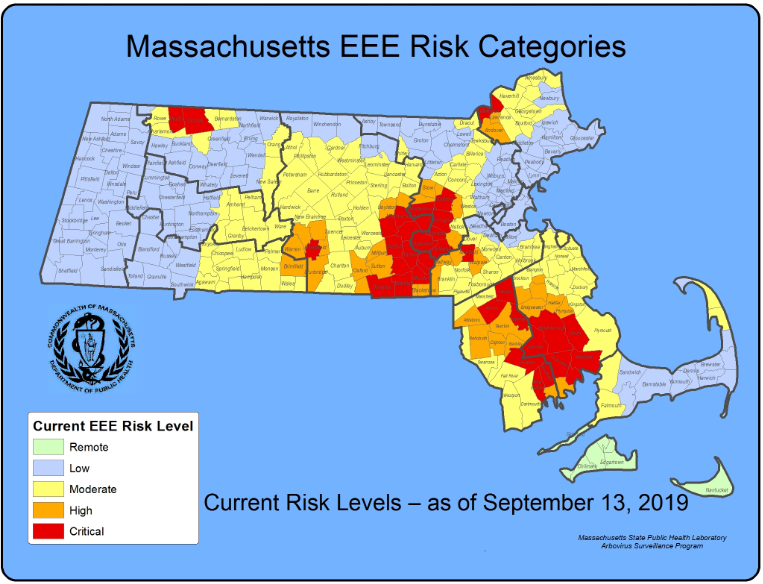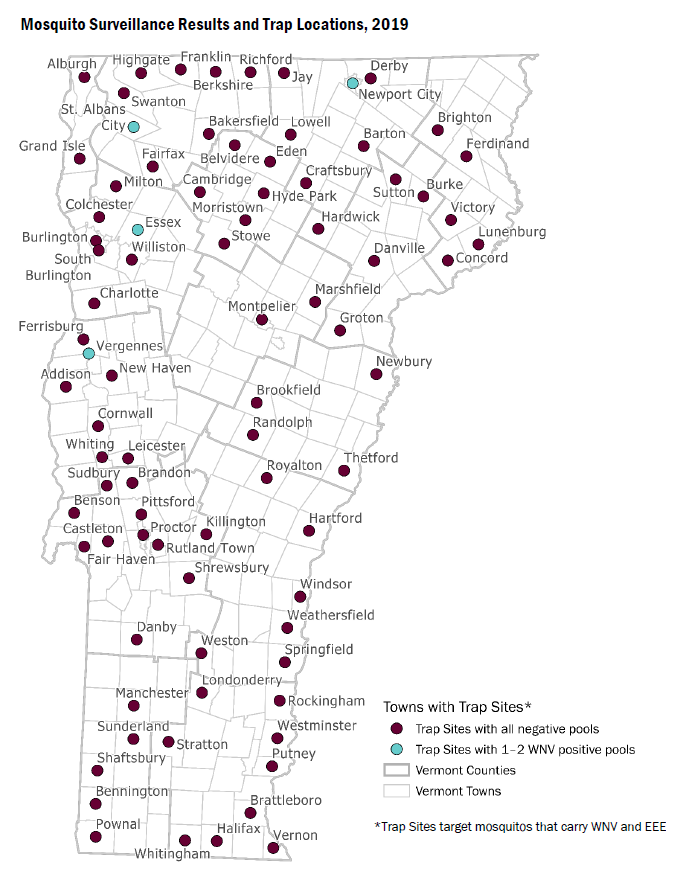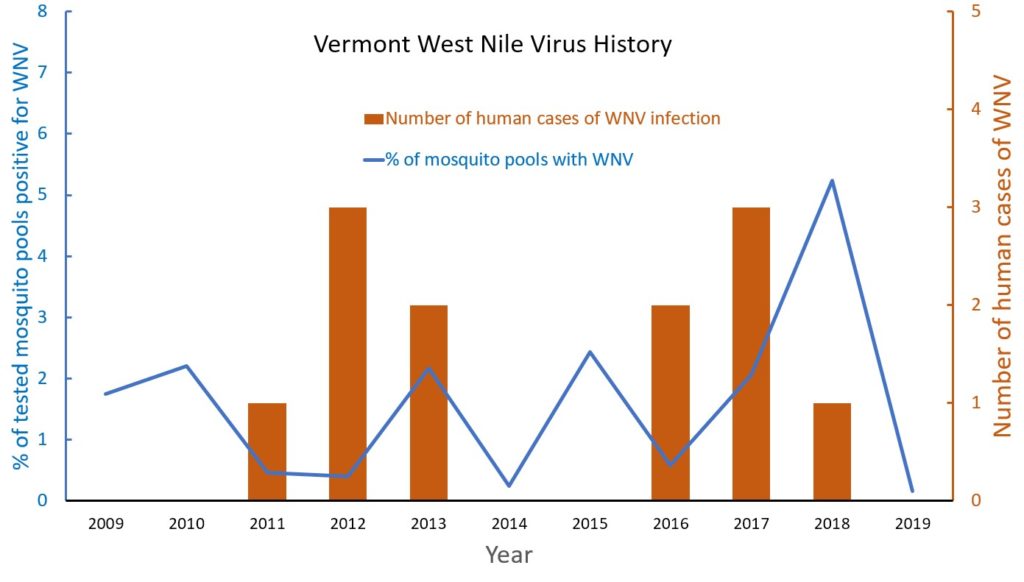Southern New England had a big year for Eastern Equine Encephalitis in 2019. There were 20 reported human cases of the EEE virus (EEEv) in Massachusetts, Connecticut, and Rhode Island with nine deaths. This is the most cases in a decade including the last outbreak year of 2012. To the east and west of Vermont, New Hampshire and New York had no human cases of EEEv, but dozens of mosquito samples were positive for EEEv. Vermont did not have any human cases of EEEv in 2019, and no EEEv was found in 3217 samples of mosquitoes tested.

A more common arbovirus, West Nile Virus, had a more typical year in New England with four reported human cases (in MA and CT) and no deaths. There were no human cases in Vermont, New Hampshire, or Rhode Island. In Vermont, the 3217 samples of mosquitoes tested included five positive for WNV. The positive samples were from Essex, Newport City, Vergennes, and St. Albans City. Both EEEv and WNV are transmitted to humans by mosquito bites.

Although there was high EEEv activity in southern New England, this year was typical in Vermont for EEEv. No EEEv has been found in mosquitoes in Vermont since 2015, and only two human cases have ever been reported in the state.
It was a very low year for WNV in Vermont. In the 11 years since 2009 there were 1-3 human cases of WNV in six of the years and no cases in other years including this year. This year WNV activity detected in Vermont mosquitoes was lower than it has been in the last 11 years.

Both EEEv and WNV are thought to be cyclical, with quiet years followed by two to four years of outbreak. It is possible that 2019 was the first of a few years of outbreak of EEEv in New England. EEEv activity has been low since 2015, so we might be at the beginning of a new outbreak cycle.
Although EEE and WNV are serious and potentially fatal diseases, their history in Vermont indicates that they are exceedingly rare here. Even uncommon diseases such as tuberculosis and Legionnaires’ disease occur 4 to 40 times more often in Vermonters than WNV or EEE. Vermonters are about 20 times more likely to die of the common flu than to be infected by WNV or EEEv, and less than 2% of people who are infected with WNV or EEEv develop a fatal disease.
Some people who are infected with EEEv or WNV have flu-like symptoms, but most notice no symptoms at all. It is thought that more than 98% of people infected with these viruses survive, and they then have lifelong immunity to the diseases. So it could be that many Vermonters concerned about these diseases can never get them. But it’s still a smart thing to avoid mosquito bites in late summer when the Vermont Department of Health advises that EEEv or WNV is present in mosquitoes near you.

